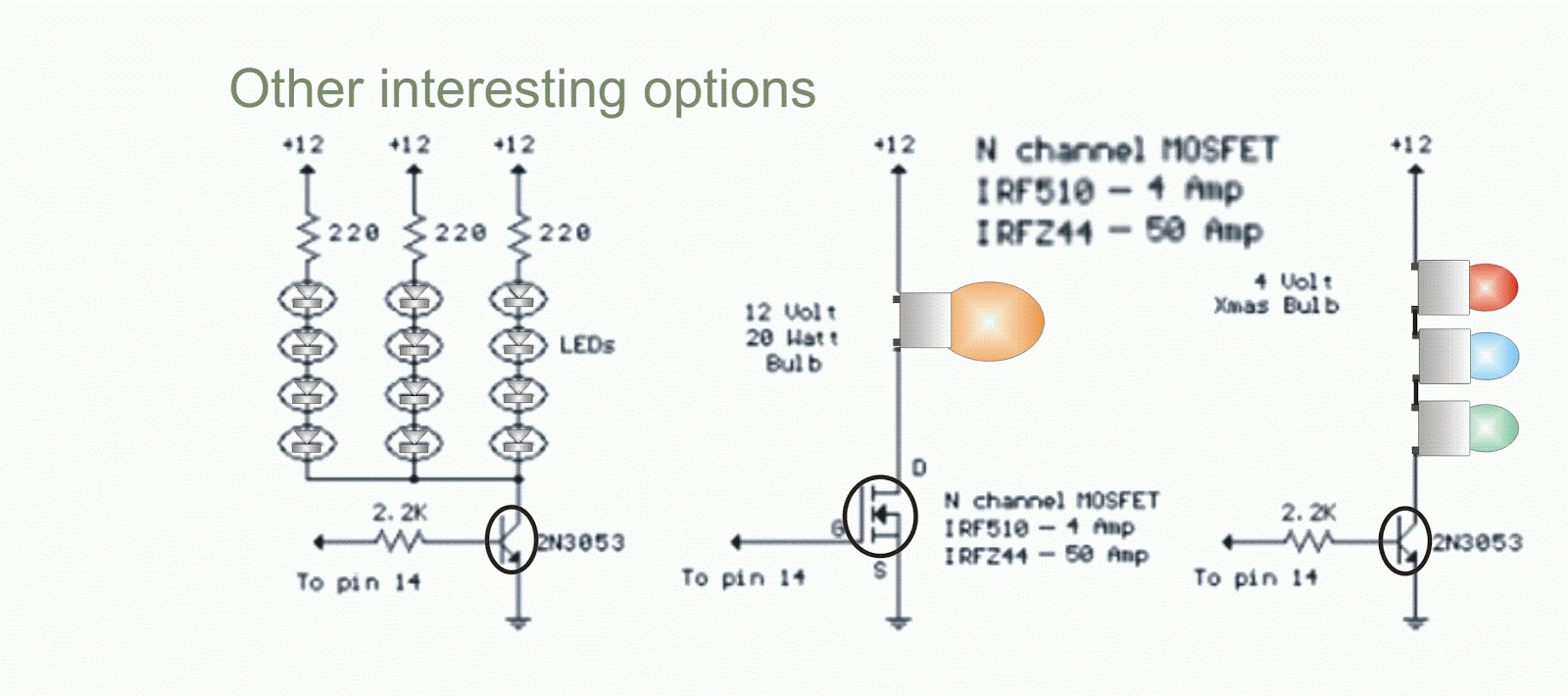Different type of light source can be used by calculating the line current and bias voltages. Christmas tree bulb is a good option, as this bulb takes 200mA at 4V DC.
Three numbers in series thus do not require any current limiting resistance when applied voltage is 12V DC, as shown in the circuit. 2N3053 can smartly handle up to 500mA of current and hence using the same transistor three strings of LEDs can be connected in parallel with a current limiting resistance of 220ohm, as shown in circuit 2.
Four LEDs will be connected in a string, each LED chain will draw around 20mA of current. Hence, in practice, using the same transistor it is possible to connect nearly 12 to 15 strings in parallel that would draw a current of 240 to 300mA.
The principle of fading is designed around a quad OP-AMP LM324. One section of the IC is being used as a ramp generator, whereas the other section is used as a Schmitt trigger oscillator, for pleasure of vision the frequency of the ramp has been kept at 75Hz. In fact, the ramp circuit is the mother of all modern Pulse Width Modulation (PWM) circuit.
When a ramp is compared with a varying DC level, the output is pulse width modulating. This is conceived through simple geometry.
The frequency of the ramp is determined by the capacitor connected as shown by changing the values of the capacitor, the ramp frequency can be adjusted.
Instead of a NPN power transistor a MOSFET like IRZ44N is a good option. Such N channel MOSFETs are very smart and with a very nominal heat sink can handle much higher current than the NPN transistors.
This particular MOSFET is designed for a line current of 44 to 50 Amp depending on the junction temperature.
However, with proper heat sinks if the temperature rise is well monitored then such MOSFETs can smartly handle the current of 10- 15 Amp without any failure. While using MOSFET it is advisable to remember the power supply to the system should not go below 10V DC, as MOSFETs need a gate drive of 10V.













No comments:
Post a Comment